Media During Slavery
White American Media coverage propagated harmful stereotypes of African Americans that began during slavery in 1704. Advertisements about runaway slaves and slaves for sale were the first portrayals to the media of African Americans. The articles usually included a description of the slave. If the slaves were for sale the descriptions were general whereas if the slave was lost the descriptions included more details regarding what the slave was wearing, their height, and possible age. The runaway advertisements often offered some reward for their return.
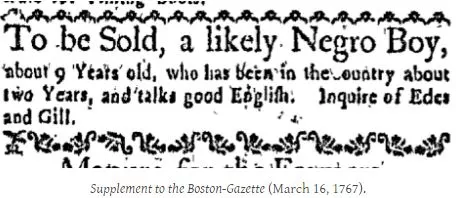
The harrowing advertisements began the portals of Black people as criminals, property, and noncitizens. In modern-day news, crime and manhunt broadcasting still include details modeled by the runaway slave advertisement during slavery. Hunt for slaves also solidified citizens’ arrest and the United States police department. Later lynching was an extension of slave punishment, citizen arrests, public judicial action, and capital punishment in recent times.
Run Away Slave
The description of a runaway slave was often more detailed than that of a slave that was for sale.
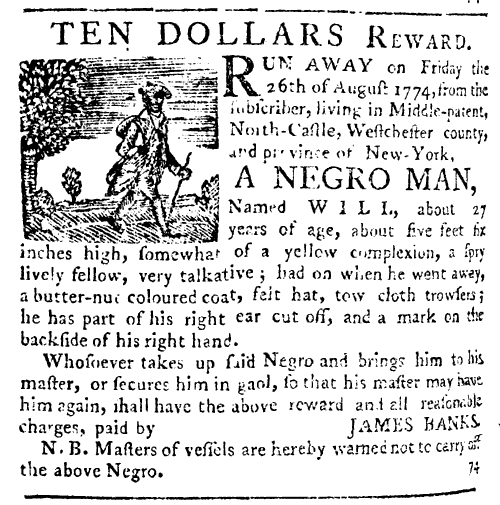
Civil War
During the Civil War, racial portrayals, pictures, and stereotypes shifted. This shift was likely related to the stereotypes in Blackface minstrelsy. The emancipation of slaves also affected the stereotypes and their purpose. There was the continued rise of portrayals of African Americans as mischievous useless and belligerent. The belligerent label was possibly so that White people would not be fearful. The useless stereotype was popularized once slaves were emancipated. This was because racist slaveowners viewed them as cattle let loose for no purpose. In stereographs and other imagery, African Americans were labeled as contraband.

Another stereotype during and after the Civil war was that slaves were objects and property, not humans. This stereotype was demonstrated in the labeling of slaves who were captured or recruited by the Union as contraband. Freed slaves, Black Union Soldiers, and Black people being called contraband conveyed African Americans as objects instead of hostages. All of these stereotypes were meant to denote African Americans as inferior humans.
The front page of “Contraband”, a Civil War-era music sheet, depicts all three of these stereotypes. The Black men pictured look mischievous, and lazy and are called contraband i.e. objects. The song is about the recently freed slaves but calls them contraband. The illustration itself has several men being thrown out of the house. They are smiling belligerently as though they have no clue what is happening. Their expressions are not happy but mischievous implying they will be up to no good once freed. This is in no way true to the reality of what happened after slaves were emancipated. The illustration was meant to infuriate White slave owners and justify slavery.

Contraband
The front of sheet music from the Civil War era demonstrates all three of the most popular stereotypes in media during and immediately after the war.
Blackface Minstrelsy
As mentioned in the analysis of Blackface minstrelsy the lines between adults and children were blurred in the “mischievous” stereotype. Adult men in Blackface minstrelsy were portrayed as childlike and naive. There was no difference between children and adults because the adults acted like children as well. This meant that children and adults were stereotyped as having the same level and lack of maturity, and knowledge. It was belittling. Furthermore, it was harmful to Black children because it transposed their innocence into nativity. The stereotype of mischievous intent also criminalized Black children’s playfulness.
Often illustrations of Black children depicted them as conniving and clueless. These stereotypes directly contrast the imagery of white children as proper, well-mannered, and aware of societal issues.
“Happy little Dahkies” Card from Great Depression
In 1937, the stereotypes of Black Children from Blackface minstrelsy were abundant in the media. This postcard illustrates promiscuous and mischievous toddlers. The watermelon is also a stereotype from Blackface minstrelsy and the Civil War era. Read more about this at the Atlantic artlicle

Black Codes and the Crime Stereotype
Once slavery came to an end, the South passed a series of laws called the Black Codes. These codes restricted every aspect of African American lives. Black codes made it illegal for Black people to own, sell and lease land, or have businesses. They also limited the public spaces Black people could occupy. One aspect of the Black Codes was the Vagrancy laws which criminalized being unemployed or having jobs that White people did not recognize. The Vagrancy laws were a direct reflection of stereotypes from Blackface minstrelsy and the Civil War.
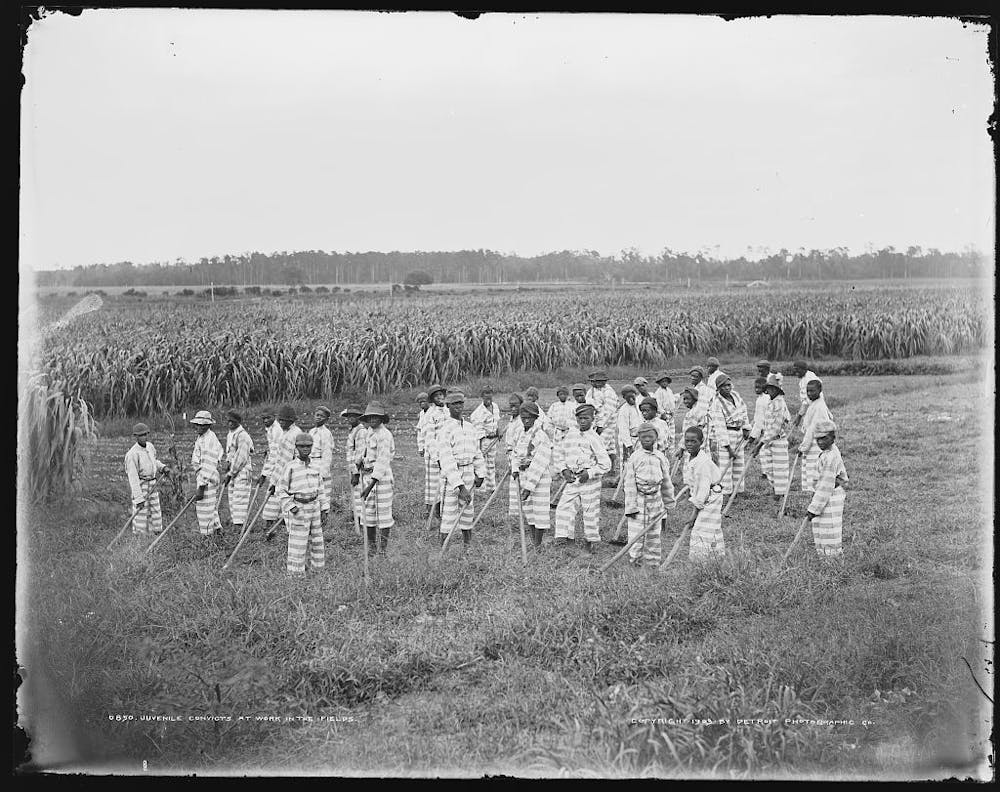
Black Codes were established in order to maintain some form of unpaid labor after the emancipation of slavery. Once a Black person was arrested because of his unemployment or other reason he would be incarcerated and sent to a labor camp. Then under convict leasing, they could be assigned to some form of labor and re-enslaved. Once released they often would get arrested again and sent to jail and put into labor. After some time, the North challenged the legitimacy of these laws and placed the South under Army guidance during the reconstruction. The Black codes paved the way later for Jim Crow laws and undeniably continued the over-policing of Black populations.
Despite the temporary legitimacy of the Black codes, they had lasting effects on countless people. There are photos of thousands of African Americans in labor camps. This includes documentation of school-aged children working in labor camps. During this time the criminal stereotype was applied to children as well as adults. This would later affect Black children who were sent to desegregated schools as they were vilified due to this stereotype. The Black Codes solidified the criminalized stereotyping of African Americans and legitimized the stereotype.
Jim Crow Laws and the Unclean Stereotype
The term Jim Crow originated as a character from Blackface Minstrelsy. Blackface Minstrelsy was always about ostracizing and alienating Black people. It was all about characterizing Black people as different and inferior in comparison to white people. For this reason, the character’s name was well suited to the racist reasoning behind the Jim Crow Laws.
The “separate but equal” Jim Crow laws, mandated that Black people and White people should not coexist in the United States. Countless spaces such as bathrooms, schools, buses, pools, and parks became segregated legally. It even undid years of progress in some spaces of integration. It solidified the fact that societal differences between White and People of Color were not a class or economic issue but fundamentally racist.
Though Jim Crow laws were passed in “”, segregation of public and private places started long before this. In 1862, three years before slavery was emancipated, the illustration by Mary Foote called “Free Seat” demonstrated segregation. During and years following the Civil War, Southern states passed segregation laws and many privately owned businesses denied their service to People of Color.
Free Seat
To the left, a Black man is being told to sit upstairs in a marked area for “n***”.
In New Orleans, railroad cars were segregated as well as in other places. In 1892, Plessy who sat in a white-only section and was arrested, took his case to challenge segregation before the Supreme Court in Plessy v. Ferguson. Then in 1896, the court ruled in favor of the “separate but equal” ideology in New Orleans. This meant the private and public spaces could deny access to Black people. This was one of many cases which solidified segregation in the United States under Jim Crow laws.

Expulsion from Railway car
This illustration from 1885, shows a man in a Railway car in front of a white family in Philadelphia. The caption below states “N*** expulsion from railway car”. This illustration was published eight years before Plessy refused to give up his seat on a New Orleans Railway.
Segregation was not only inflicted by private businesses. The government heavily caused the predominance of segregation across the United States with the establishment of the Federal Housing Administration. One of the longest-lasting effects of segregation was Redlining. In the 1930s the housing shortage inspired the racist segregation of suburban neighborhoods. Housing laws by states across the U.S. forced the migration of Black people to urban areas and prevented them from living in White neighborhoods. County lines between housing areas were designated to affect the public funding with the intention of under-providing finances and services to predominantly Black neighborhoods. This government organization may have created the greatest racial divide as White and Black children did not even interact for years. The children did not live in the same places or go to the same schools due to district lines, redlining, and segregation laws. To this day, areas and neighborhoods remain predominantly racially divided due to redlining that has not been undone and fixed.
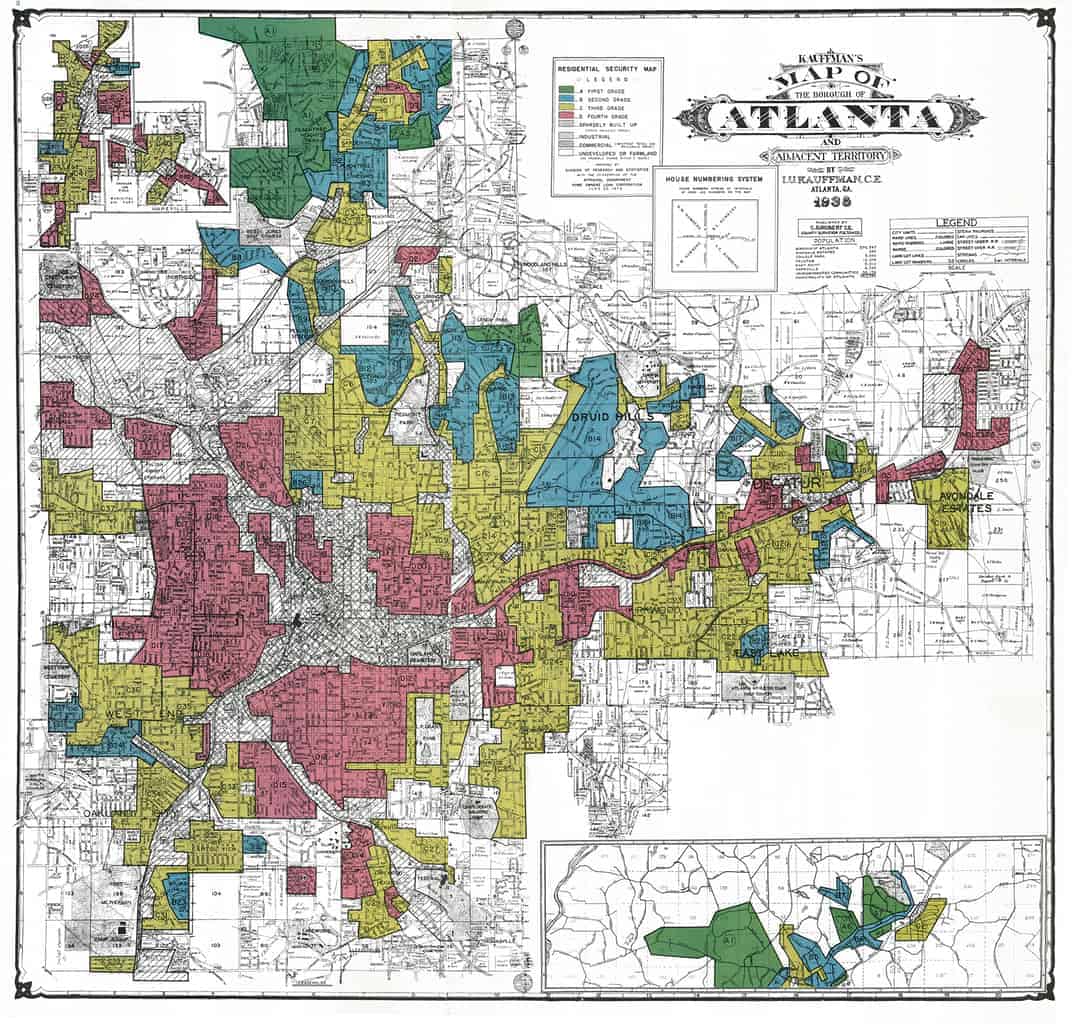
HOLC Map of Altlanta
This map was made in 1938 and outlines hazardous areas. The areas marked as most hazardous reflected neighborhoods of large minority groups. These areas were labeled as having higher lending risks. The high-risk label often denied access to capital investment. Read more about this map and redlining at the NCRC site.
In the 1930s, many African Americans hoped the World Wars would help with racial relations. It did not. After the military conflicts, Jim crow laws continued to gain ground in the United States. Instead, integration of the military and temporarily improved race relations demonstrated the dispensability mentality the United States had about Black people. The immediate return to segregation after the World Wars and Vietnam made it again clear that the United States still was willing to use African Americans’ labor while denying them human rights as citizens.
During the Civil Rights Movement
Jim Crow Laws and segregation were established and operated under the racist idea that Black people were inferior and unfit for society. The two stereotypes and racist mentalities that would be understood by young children earliest were the criminal stereotypes and the unclean stereotype. Their understanding of the unfairness of these stereotypes then motivated their participation in the Civil Rights Movement (Freeman, 2011).
For example, during the 1960s, the criminal stereotype was taught to children and reinforced by society. It made them fearful of African Americans and other Black children. One such white child was Beth, who in her twenties was interviewed by Ruth Frankenberg about her understanding of race as a child during the Civil Rights Movement. She felt her parents were ambivalent to race. Nonetheless, she acknowledged that during the desegregation of schools her parents transferred her away from a desegregated school. They did this likely because of the “rowdy Black girls” after an altercation she had. It is understood then that the parents viewed black children as too violent for Beth to be safe around (Frankenberg, 1993). For Beth’s parents, racist stereotypes were engrained in their motivations and actions. They were proof that being ambivalent to racism isn’t the same as being anti-racist. They believed in the criminal stereotype and continued racism by example. Read more about this in: “Children’s exposure to Race”
For Colored Only
Water fountains for Black people were much smaller, dirtier, and malfunctioning. Their condition sent a message about the sanitation standards assigned to different races because of racism.
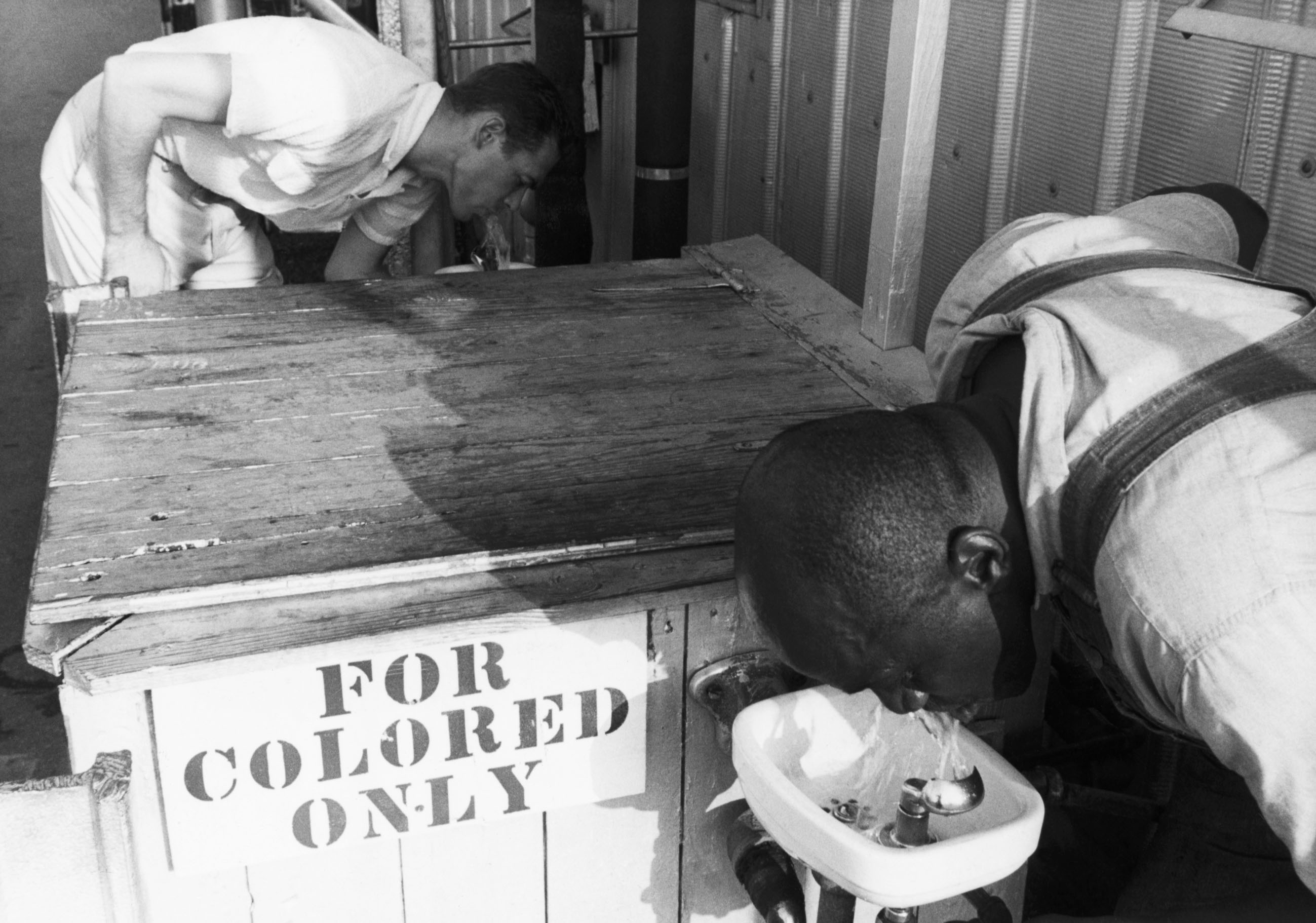
The second racist stereotype that was reinforced to children through segregation was that Black people were unclean. Because of the separation of bathrooms, pools, and other facilities, it was understood that White and Black people should not share certain things. This implied the contamination of a space that a Black person had occupied. This affected both Black and White children as they lived their lives avoiding, fearing, and hating each other. Read more in: “Children’s Exposure to Race”
In Conclusion
Stereotypes were what society in the 1960s taught White children and Black children about race. Stereotypes themselves are a simplification of characteristics. They are harmful because they can pervade even when proven wrong and ignorant. The whole system of society in the U.S. was based on racist stereotypes. The media and representation of Black people and People of Color were engrossed with racism. Children were not unaffected by these stereotypes instead they took them sometimes more intently than adults did.
Read More about Children’s exposure to race in the next article on the path found below.
Music and Race ...
Path
… Children’s Exposure to Race